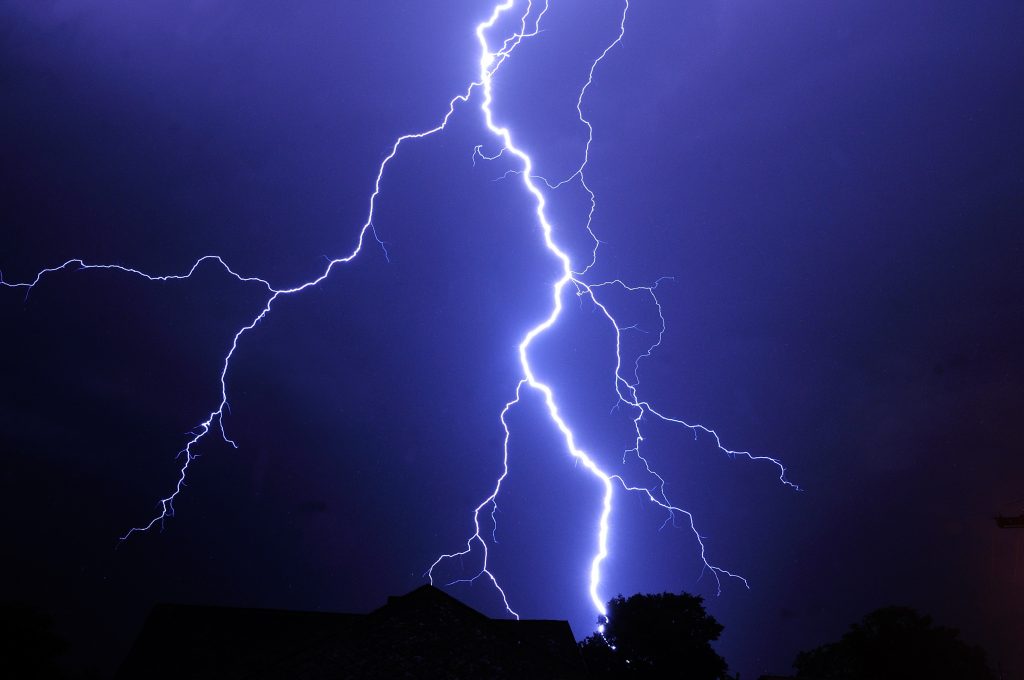 Thunderstorms hit areas across the United States from March to October every year — some producing a mix of wind and rain; others producing extreme cases of lightning, tornadoes and hail. Severe thunderstorms can be as dangerous as they are common. Being prepared will help you keep your home — and your family — safe.
Thunderstorms hit areas across the United States from March to October every year — some producing a mix of wind and rain; others producing extreme cases of lightning, tornadoes and hail. Severe thunderstorms can be as dangerous as they are common. Being prepared will help you keep your home — and your family — safe.
Here are some facts about severe thunderstorms, including damage statistics and preparation and recovery tips.
Table of Contents:
- Severe Thunderstorm Background
- Thunderstorm Statistics
- Common Types of Damage
a) Warnings, Alerts & Where to Go - Guide to Storm Recovery and Damage Repair
- Top States for Thunderstorms
- Thunderstorm Safety Tips and Prevention
a) Keeping Your Insurance Premiums Down - Resource List
Severe Thunderstorm Facts
Thunderstorms are defined as storms that produce thunder and lightning. Severe thunderstorms may also produce:
- Rain
- High winds
- Sleet or snow
It’s important to note that thunderstorms do not always produce moisture. A storm in which you see lightning and hear thunder but never feel a drop of water is known as a “dry” thunderstorm. Thunderstorms that produce hail and tornadoes are known as “supercell” storms. Storms occur either in clusters or lines; therefore, they may present as a single thunderstorm or as multiple thunderstorms hitting one after the other.
Causes
Thunderstorms are caused when moisture from the lower or mid-level part of the atmosphere mixes with warm, unstable air from the ground. Moisture and air then push upwards into the higher atmosphere to form clouds that produce thunder and lightning, as well as potential precipitation. Spring, summer and fall are most conducive to thunderstorms because the sun heats the ground and moisture is more perceptible in the air, especially in humid climates.
Thunderstorms must also be lifted to begin their formation. Some sources of lift include:
- More heat on the ground than in the air
- Changes in atmospheric conditions near mountains
- Weather front changes caused by clashing cold and hot air
- Drylines, or when moist and dry air clash
- Land or sea breezes
Any of these situations can immediately create a thunderstorm without warning, even in the middle of a clear blue day. In many cases, these storms will also be accompanied by lightning. Most will not come with hail or tornadoes, unless they occur in tornado-prone states such as Kansas, Oklahoma, Texas and Missouri.
Thunderstorm Statistics
Severe thunderstorms are responsible for a significant number of injuries, fatalities and property damage claims across the United States every year. According to statistics reported by the National Oceanic and Atmospheric Administration (NOAA) in 2013:
- Lightning accounted for 23 fatalities, 145 injuries and $23.9 million in property damage.
- Tornadoes caused 55 fatalities, 756 injuries and $3,642.2 million in property damage.
- High winds resulted in 17 deaths, 121 injuries and $626.8 million in property damage.
- Hail led to 4 injuries and $1,234.5 million in property damage.
- Flash flooding ended in 60 deaths, 25 injuries and $956.9 million in property damage.
It’s estimated that at least 867,000 people are affected by thunderstorms every year, with lightning accounting for at least 300 injuries and roughly 60 fatalities. Moreover, at least 16 million thunderstorms occur worldwide every year — and at least 2,000 storms are causing damages and injuries around the world at any given time.
Preparing for Severe Thunderstorm Conditions
Severe thunderstorms can cause significant physical harm as well as damage to your home and land; therefore, it’s imperative to take measures to protect yourself. Some homeowners might invest in lightning rods to better defend their homes against a surge. There are also whole-house surge protectors so you don’t have a power outage during a severe thunderstorm. There are many other types of defenses you can put in place to protect your home against severe thunderstorms. For example, here’s how to prepare for hail, winds, tornadoes and floods.
Hail Damage
If you have a car, it’s imperative that you park it in your garage before a severe thunderstorm. Otherwise you could be looking at dents, cracks in the windshield and potentially broken glass on the driver or passenger’s side. While hail is not the most common precipitation to accompany a severe thunderstorm, it can happen. You could also:
- Install wind shutters (i.e. hurricane shutters), designed to defend against high winds and hail.
- Purchase & install pressure or high impact windows.
- Secure doors with heavy-duty bolts at the top and bottom of the door frame.
Hail can cause damage to many parts of the home, but it most commonly hits the roof the hardest. A damaged shingle, in particular, can allow water to get through to the roof deck and cause harm to your ceiling and support beams. This will eventually lead to more leaks in your roof, stains on the ceiling and walls, and potential flooding.
The cost to repair a roof following such damages will be expensive, but holding off could lead to even more costly repairs down the road. It’s best to perform repairs as quickly as possible. The two types of repairs you might be faced with include:
- Asphalt: Hail damage will appear as a dark spot or bruise because the granules will be missing. Look for holes, cracks or absent shingles. Repair immediately.
- Other shingles: Wood, metal, tile and other shingles will be hit hard by hail as well. Cracked, missing or broken shingles will allow leaking, so you’ll need a roofer in immediately to fix the problem.
Wind Damage
Winds can reach at least 300 miles per hour during a severe thunderstorm, which can rip siding off your home and exacerbate the pelting of your exterior with hail and debris as well. Wind damage repairs can cost thousands of dollars, depending on the extent of the injury. While you can’t prepare for flying debris from other houses, you can minimize damage by curtailing debris in your own yard. To prevent wind damage, you can:
- Trim back tree branches to prevent fallen limbs.
- Secure window shutters to defend against debris.
- Tie down anything that could fly away and hit the siding or the roof.
If your siding is looking worse for wear, have a siding professional come out to repair it. It could make the difference in whether you’re left with an intact home exterior after a storm or not.
Tornado Damage
Tornado damage occurs following high winds from blowing debris. While you can’t do a lot to prepare your home for a tornado, it helps to trim tree branches back from your roof and windows. You can also reinforce your roof to better handle high winds:
- Shake roof: Add more nails.
- Slate roof: Seal down with cement.
- Tile roof: Place a steel strap over the tiles.
- Asphalt roof: Nothing can be done, but inspect after.
You can also invest in a storm cellar, which is built underground and allows great defense against high winds during a tornado. A storm shelter is built close to the home so you have easy access during a tornado and don’t have to run far for safety. A storm cellar door is built at an angle so that debris blows over the door. This allows for debris to roll over the door rather than trap it, so you can get in and out easily. The confines of a storm cellar for a family is around 8 by 12 feet with an arched roof. It’s made of cement blocks and rebar to ensure maximum defenses.
Flood Damage
Flooding can cause tens of thousands of dollars in damages to your home. To prepare your home for potential flooding, ensure that the ground is sloped away from your foundation. This will defend your home against water buildup. Also, regularly maintain any storm drains, gutters and downspouts. Other tips include:
- Cleaning gutters regularly
- Check and clean storm drains on a bimonthly basis
- Clean the storm drain cover
- Check window wells and sump pumps
- Construct barriers to stop flood water from getting into your home.
- Raise your heating system to a higher floor level to avoid flood water.
- Seal cracks in the basement walls.
Warnings, Alerts & Where to Go
You will see severe thunderstorm warnings and alerts appear throughout the span of the storm, whether it’s on the radio, TV or your smartphone. You can find warnings:
- In emergency notifications on smartphones
- On weather apps as alerts in real time
- On the radio from the National Weather Association
- On TV at the bottom as a grey moving bar with affected counties, times
When you see a severe thunderstorm warning in effect for your area, you need to stay indoors until at least 30 minutes after the last clap of thunder. Stay away from windows and doors, in case they happen to blow open or break in high wind conditions. Stay out of water in case of lightning. If you’re driving when you get the alert, head home if you’re close or get off the road immediately.
Storm Recovery and Damage Repair
After a severe thunderstorm hits your home, you could be looking at a few hundred dollars worth of simple repairs — broken windows, landscape upkeep and debris removal, for example — or you could be looking at thousands of dollars in repairs due to hail damage and flooding. Survey the extent of the damage and determine whether it will cause additional long-term issues; immediately fix anything that will. Here are some common post-storm damages and how to address them:
Roof Damage
Broken tree branches, high winds, flying debris and hail can cause roof damage that will need to be addressed following a severe thunderstorm. Some signs of roof damage after a storm include:
- Holes
- Split seams
- Missing, bruised or dented shingles
- Cracked or broken tiles
- Granules in the gutters
- Leaks
- Dents on the vents and gutters or roof flashing
It’s imperative that you have a roofing contractor fix your roof following a severe thunderstorm. Otherwise, these damages could lead to expensive interior problems like attic flooding, ceiling stains, and mold. In worst-case scenarios — those in which your roof is old and cannot handle the high winds or hail storms — your roof may cave in on itself. This is uncommon, but you do run the risk of having to replace your roof if it’s reaching the 15-20 year mark around the time of a severe thunderstorm.
Siding
Weather associated with severe thunderstorms can also significantly impact the exterior and siding of your home, causing:
- Cracks that run parallel to the siding
- Chips or breaks in siding
- Breaks or holes that are punched into the siding by hail and debris
- Dings and dents, most commonly found in aluminum siding
- Paint damage such as chips, cracks and color changes or small black marks
If your siding shows cracks, chips, or dings and dents, have it repaired immediately to prevent pests, insects or climate conditions from further impacting your home. Breaks and holes, in particular, negate the siding’s ability to defend your home entirely. Such damage will require siding to be replaced by a contractor — in parts or in whole — which could cost thousands of dollars. Paint damage is the least of concerns because it’s a cosmetic injury rather than a functional one.
Windows and Doors
Windows and doors bear the brunt of severe thunderstorms’ debris and high winds, making them highly susceptible to damages. Some damages you’ll see after a storm might include:
- Cracked or splitting doors and frames
- Broken glass or shattered windows
- Debris embedded in a door or window
- Paint chipped or cracking around a door or window
Contractors recommend taking the following steps to protect your windows and doors against severe thunderstorms.:
- Window film: This keeps window glass from shattering.
- Plywood boards: Install over windows before a storm.
- Storm shutters: Shutters defend against high winds and debris.
- High impact glass: Impact glass breaks into two pieces rather than shattering when hit by debris.
Tree Damage
While you can trim your trees back before a storm, there’s still a chance that high winds, flying debris and hail will cause them to bend, twist and break during a severe thunderstorm. There are six different ways a tree can be damaged during a storm:
- Blow-over: A tree is pushed over by high winds.
- Stem failure: Stems break under high winds because of old wounds and pest damage.
- Crown twist: Tree crowns will twist and split under high winds because of poor maintenance, or because they’re lopsided.
- Root failure: Poor anchorage to the ground will cause the root to pull up or snap, and the tree will fall or lean over.
- Branch failure: Branches will break off from the tree because they’re poorly attached in the first place.
- Lightning: Lightning will hit the tree and cause small explosions down the line of the tree, causing it to break and fall.
There’s not much a homeowner can do to prep a tree for potential damage except provide good care and maintenance. Trim trees on a regular basis and try to keep branches away from your home and power lines.
Flood Damage
If your home is flooded following a severe thunderstorm, there are various steps you can take to recover your home. It’s going to be a long process, involve a lot of tearing up, remodeling and time, but your home will go back to its original state eventually. Some recommendations from the CDC include:
- Wear safety gear.
- Get rid of anything that can’t be cleaned (bedding, fabric flooring, upholstery, toys, linens)
- Throw away drywall and insulation that’s wet.
- Deep clean and scrub hard surfaces with hot water and dish detergent.
- Use fans, A/C units and dehumidifiers to speed the drying process.
- Wash all clothing touched by flood water with hot water and laundry detergent.
Be aware of electrical power lines, natural gas lines, frayed wires and any other hazards from flooding that could injure you. You should check with the gas company or the fire department before returning to your home to avoid injury. Do not return to your home during the day to avoid any accidents from being unable to see. You shouldn’t be allowed to return until the police or fire department say it’s okay. You should also not wade in standing water or around downed power lines, just in case.
If you need help with the big part of the recovery job — pulling up carpet, taking down drywall, removing appliances, so forth — you can call in a disaster recovery contractor to help you. These professionals are licensed and experienced in handling situations like flood recovery and know where to start. They can also look out for disaster-specific issues like mold, foundation issues and the like.
Top States for Thunderstorms
Some states are more prone to severe thunderstorms than others, which means homeowners in such states need to be better prepared. According to a report on WeatherBug, in 2013 the top states for severe thunderstorms between March 1 and June 17 included:
- Texas: 922 events*
- Oklahoma: 725 events
- Kansas: 652 events
- Missouri: 515 events
- Illinois: 456 events
- Nebraska: 405 events
- Iowa: 403 events
- New York: 252 events
- Mississippi: 233 events
- Virginia: 232 events
- Louisiana: 223 events
*Note: events are defined as severe thunderstorms
The most active states — Texas, Oklahoma, Kansas and Missouri — received 300 severe thunderstorm alerts per week.
Thunderstorm Safety Tips and Prevention
To keep your home and family safe before and during a thunderstorm, it’s imperative that you take precautionary measures — especially if you live in an area prone to storms.
To prepare for a thunderstorm, the Federal Emergency Management Association (FEMA) recommends:
- Putting together an emergency kit and family plan
- Removing debris and branches
- Securing outdoor objects that could blow away or damage the home
- Staying inside your home
- Closing all exterior windows and doors
- Unplugging all electronic equipment before the storm.
While there isn’t much you can do to prevent a severe thunderstorm, you can keep the damages to a minimum by securing as much in your home as possible and reinforcing the defenses around your home exterior. Tie down your roofing or seal it with mortar, call in siding professionals and clean up all the debris around your house.
There are storm damage professionals who can come in following a natural disaster and help with the recovery. While they don’t fix everything, they can help you start the process. If you want to read more about what they do, read this FAQ from the National Storm Damage Center.
How to Keep Your Insurance Down
Standard homeowner policies cover your home and what’s in it. You should be covered for storm damages and major natural disasters, including severe thunderstorms; however, flooding is not generally covered. Storm-resistance improvements that will lower your premiums include:
- Impact-resistant shingles
- High impact glass
- Storm shutters
Always file a claim following a severe thunderstorm if your home is extensively damaged. There’s a chance your rate is going to increase because everyone else in the area is filing a claim. But, there’s no reason to miss out on getting your damages paid for by the insurance company when you’re paying higher rates for it anyway.
Resources
- http://www.redcross.org/prepare/disaster/thunderstorm
- https://www.nssl.noaa.gov/education/svrwx101/thunderstorms/
- http://www.weatheronline.co.uk/reports/wxfacts/Thunderstorms.htm
- https://stormdamagecenter.org/thunderstorms.php
- http://www.erh.noaa.gov/lwx/swep/Spotting.html
- http://www.nssl.noaa.gov/research/thunderstorms/
- http://emergency.cdc.gov/disasters/floods/cleanupwater.asp
- http://emergency.cdc.gov/disasters/floods/after.asp
- http://knowbefore.weatherbug.com/2013/06/26/thousands-of-thunderstorms-guess-the-top-states/
- http://www.ready.gov/thunderstorms-lightning
- http://www.nws.noaa.gov/om/hazstats/sum13.pdf
- http://statservicesva.com/stats-about-storms-and-storm-damage/
- https://www.depts.ttu.edu/nwi/research/DebrisImpact/Reports/DDS.pdf
- https://stormdamagecenter.org/storm-damage-faqs.php
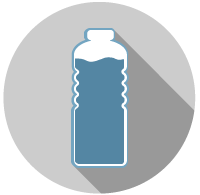 10 Essential Tornado Supplies For Your Survival Kit
10 Essential Tornado Supplies For Your Survival Kit  5 Post-Tornado Safety Tips That Could Save Your Life
5 Post-Tornado Safety Tips That Could Save Your Life 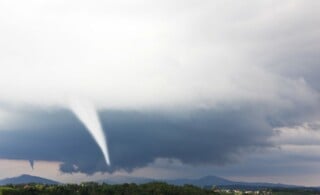 Tornado Safety Guide
Tornado Safety Guide 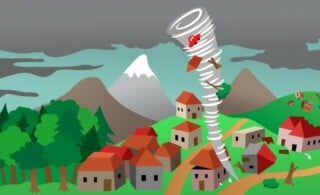 Fun & Interesting Facts About Tornadoes For Kids
Fun & Interesting Facts About Tornadoes For Kids 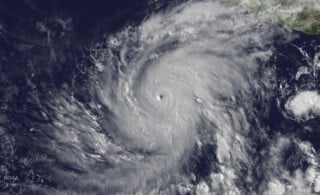 Hurricane Safety Tips
Hurricane Safety Tips 

What effects and clean up should someone expect from a monsoon storm?
In a Thunderstorm in the South we were told to get somewhere and sit down. Get off the telephone, Don’t wash dishes, get out of the tubs, unplug the iron…etc… we’re the things necessary?